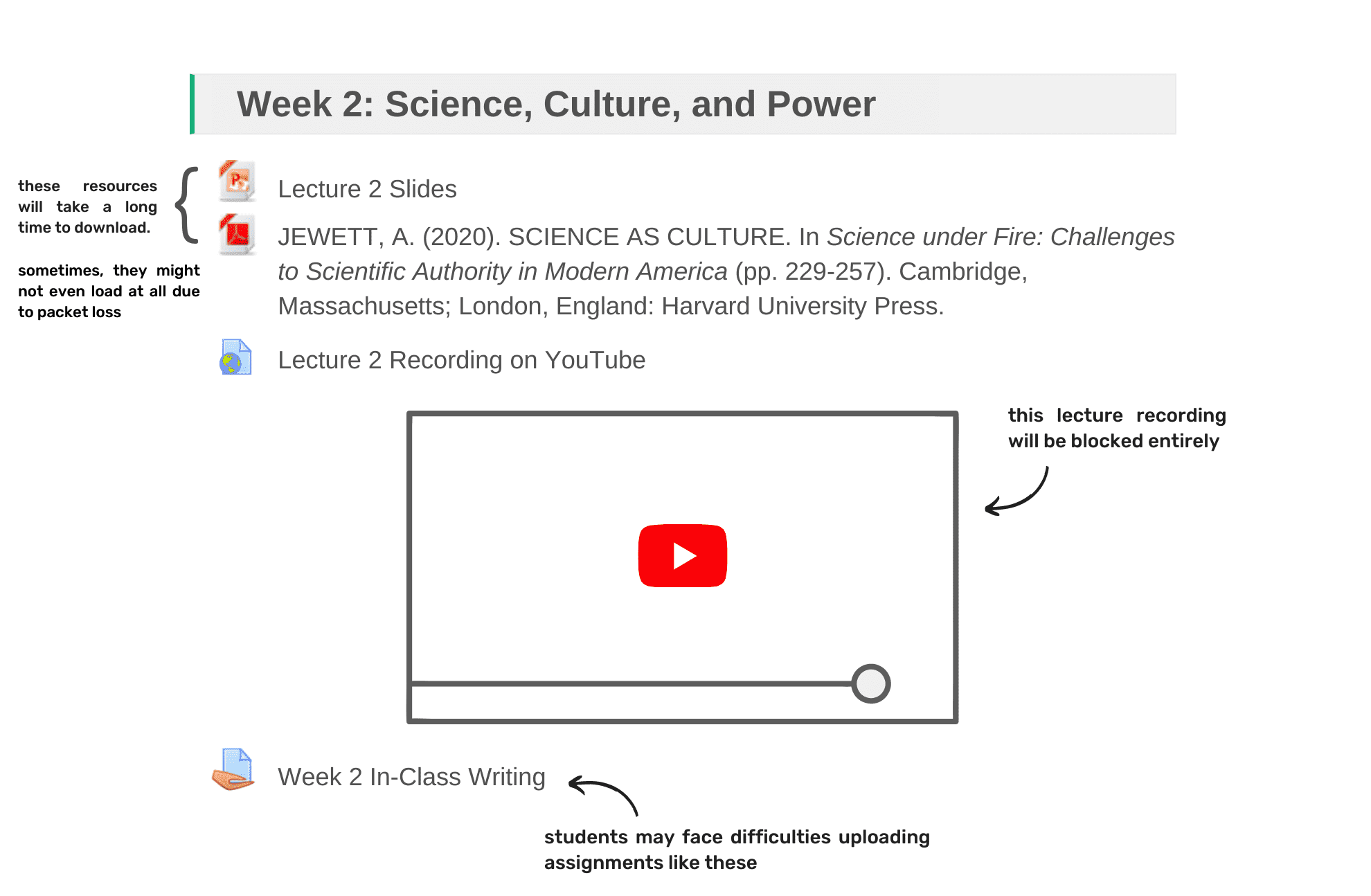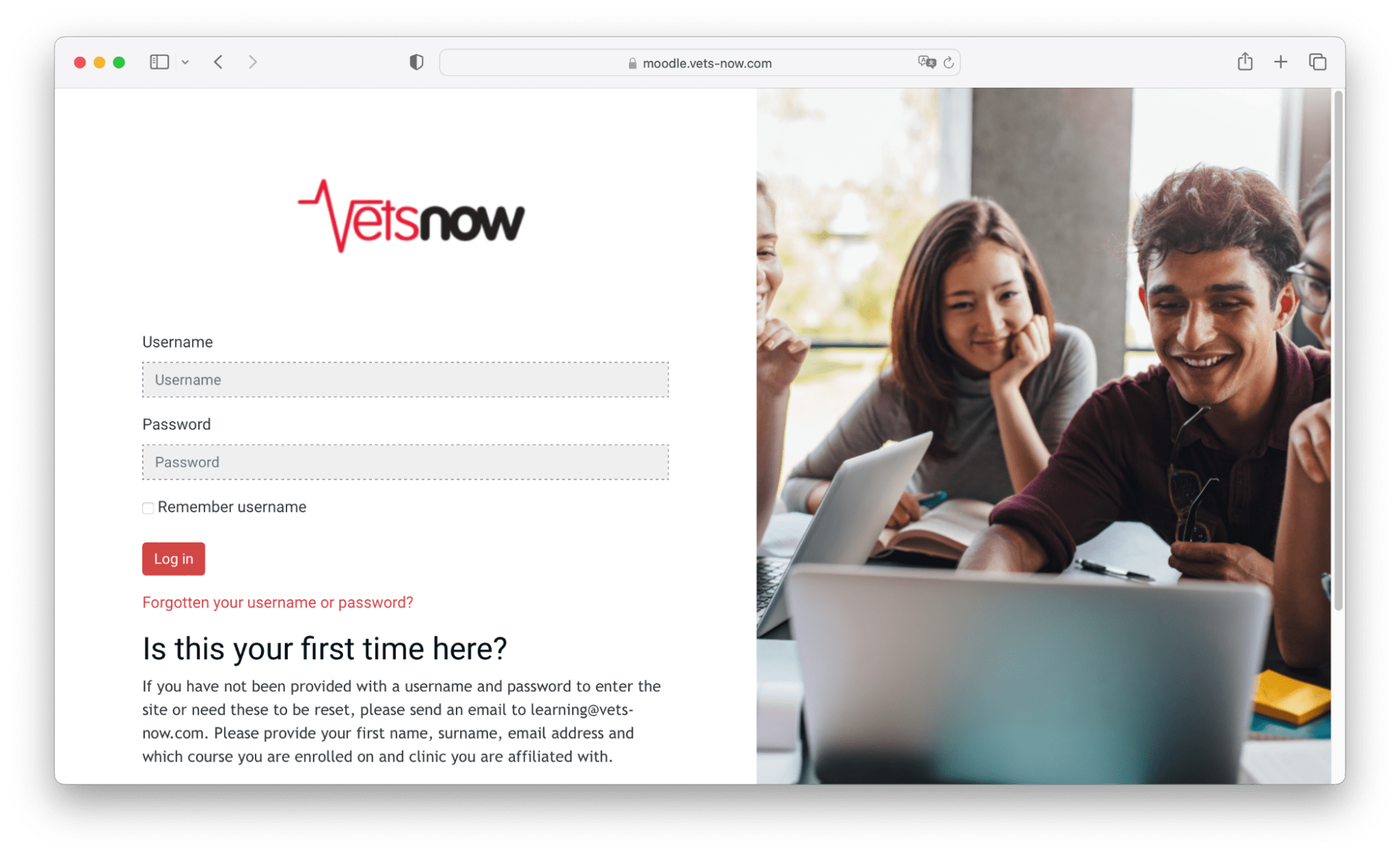1 - Expected post-Chinafy results
Does Moodle work in China? How is it accessed In China?
Unfortunately, not off the shelf! Moodle doesn’t work the same way in China as it usually does elsewhere.


It’s common for students to face technical difficulties in accessing course materials, lectures, and submitting assignments because of the way Moodle is built.
Moodle is one of the most popular Learning Management Systems (LMS) on the market, and used by roughly 25% of the top 200 universities and a number of other educational institutions globally.
Students in China use LMS’ like Moodle, Blackboard, Canvas, and more as a platform that administers, documents, automates, and delivers educational resources and training programs.

Educational Sites as well as organizations doing further training and education programmes utilize Moodle (source: VetsNow)
What is it like to access Moodle from China?
Accessing Moodle from China is possible, with some caveats. Moodle itself is not blocked in China and it is possible to access it.
It is often however, in the delivery of its content and interacting with crucial functions within the site that problems arise.
With such a crucial role to play in education, one must ask -
Why Doesn’t Moodle Work properly In China?
Reason 1: Blocked or inaccessible Media Files
Content on LMS’ are some of the main areas that face difficulty in access from China.
For example, video content on video-sharing platforms like YouTube and Vimeo are often set as class assignments or to show pre-recorded lectures. Because YouTube and Vimeo platforms are blocked in China, those media files are also inaccessible in China by default leading to broken content delivery.
Keep on reading to learn how Chinafy resolves this, without you having to replace your Youtube and Vimeo videos manually.
Reason 2: Poor Speed and Connection
Websites such as Moodle often have components and resources hosted across 3rd-party domains, most of which run into accessibility issues in China.
These 3rd-party domains are typically built and hosted outside of China, which run into both latency and throughput challenges faced by websites in general when delivering digital content to China visitors.
Even when resources are delivered closer to students in China through a global Content Delivery Network (CDN), many of these resources are still not optimized to deliver and function fully in China.
Those are just the two key factors among others that contribute to poor loading times for class recordings, lecture slides, assigned readings, and more — if they manage to load at all.
How can you make Moodle work in China?
At Chinafy, we help learning institutions make their websites work in China…
Quickly, with turnaround time for your site at two weeks or less and
Efficiently, without having to make a website from scratch. Chinafy does the heavy lifting and bolts on to your site with a simple DNS update. Maintain full control of your global site with a China optimized version working in parallel.
Click here to read the full article on how Chinafy works to optimize Moodle sites in China.
Of course, best practices don’t hurt to implement. Here are some that we’ve collected from experienced Moodle users who work with students both in China and globally.
Test whether your platform is accessible for students in China. Tools like our Chinafy Visual Speed Test can be used to visualize loading a page within China.
Be inclusive and accessible with your course design on Moodle. Be mindful of varying abilities for students to access parts of your Moodle site.
Do not ask students to use a VPN, as this may have potential legal consequences.
Diversify communication channels with students. Keep in mind that Google’s G Suite does not currently work in China.
Be mindful of uploading sensitive content.
Click here to learn more about how Chinafy works to optimize Moodle sites in China.



1 - Expected post-Chinafy results






























